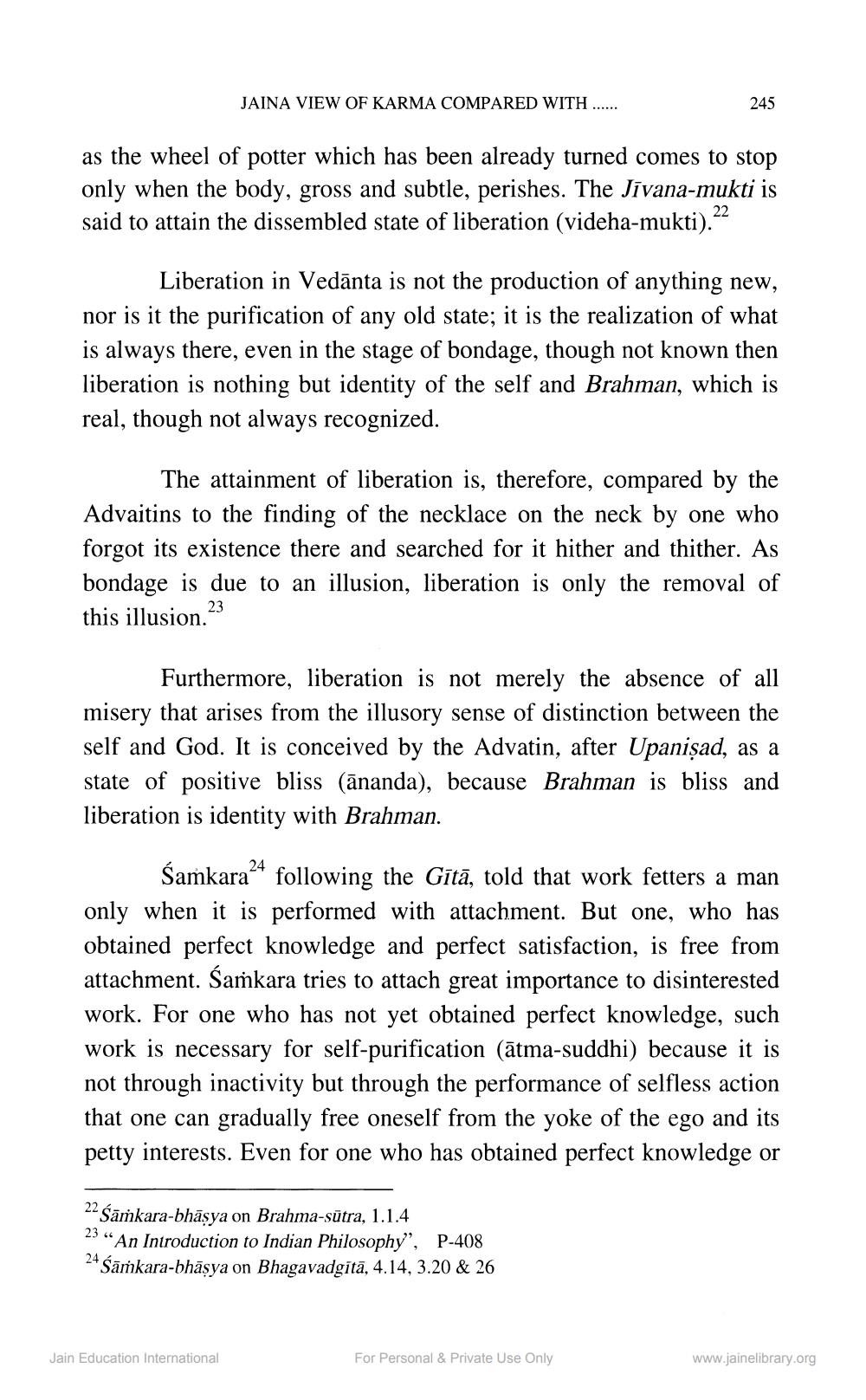________________
JAINA VIEW OF KARMA COMPARED WITH ......
245
as the wheel of potter which has been already turned comes to stop only when the body, gross and subtle, perishes. The Jivana-mukti is said to attain the dissembled state of liberation (videha-mukti).22
Liberation in Vedānta is not the production of anything new, nor is it the purification of any old state; it is the realization of what is always there, even in the stage of bondage, though not known then liberation is nothing but identity of the self and Brahman, which is real, though not always recognized.
The attainment of liberation is, therefore, compared by the Advaitins to the finding of the necklace on the neck by one who forgot its existence there and searched for it hither and thither. As bondage is due to an illusion, liberation is only the removal of this illusion.“
Furthermore, liberation is not merely the absence of all misery that arises from the illusory sense of distinction between the self and God. It is conceived by the Advatin, after Upanişad, as a state of positive bliss (ānanda), because Brahman is bliss and liberation is identity with Brahman.
Šamkara24 following the Gītā, told that work fetters a man only when it is performed with attachment. But one, who has obtained perfect knowledge and perfect satisfaction, is free from attachment. Samkara tries to attach great importance to disinterested work. For one who has not yet obtained perfect knowledge, such work is necessary for self-purification (ātma-suddhi) because it is not through inactivity but through the performance of selfless action that one can gradually free oneself from the yoke of the ego and its petty interests. Even for one who has obtained perfect knowledge or
2- Sāṁkara-bhāsya on Brahma-sutra, 1.1.4
3 “An Introduction to Indian Philosophy", P-408 -* Sāṁkara-bhāsya on Bhagavadgitā, 4.14, 3.20 & 26
Jain Education International
For Personal & Private Use Only
www.jainelibrary.org




